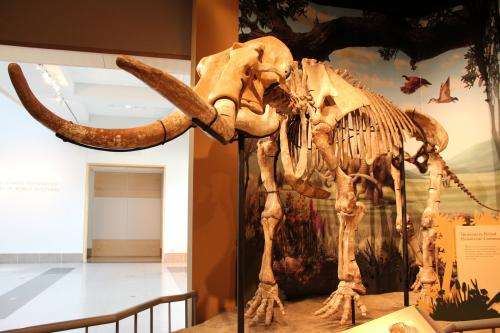Climate change key to megafauna deaths

An ancient DNA specialist from Murdoch University has helped pinpoint the cause of mass extinctions of megafauna such as woolly rhinos, mammoth and other Ice Age mammals.
Dr James Haile took part in a major international collaboration involving 30 teams from 12 countries, helping to collect, date and analyse 242 permafrost sediment samples and eight samples of gut content from permafrozen large mammals around the Arctic.
The result was the long-sought 'smoking gun' behind the mass extinctions, which scientists have pinpointed as a loss of biodiversity due to severe climate change experienced during the Last Glacial Maximum, 25,000 to 15,000 years ago, when the planet reached its coldest temperatures.
"Our findings represent a paradigm shift, in that we've found that northern hemisphere landscapes weren't dominated by grasses, but were much more diverse and stable during the Ice Age," Dr Haile says.
"Large animals such as the wholly rhino and mammoth fed primarily on protein-rich forbs, herbaceous flowering plants, which were essentially wiped out during the Last Glacial Maximum.
"While the mammals survived, biodiversity narrowed, with graminoids and woody plants prevailing and forbs diminishing, which ultimately proved fatal for the animals in question."
Dr Haile says knowledge about the way in which the Arctic environment responded to climate fluctuations in the past will help scientists predict the effects of future changes, including in WA's south-west.
"Together with colleagues from Curtin University, we are currently using the same methods to investigate the past biodiversity of South West WA, one of only 34 biodiversity hotspots in the world, and one which has experienced dramatic changes since the arrival of humans," he says.
"While we may get a handle on climate change in future by reigning in carbon emissions, we can't expect landscapes and populations to return to their previous composition.
"For South West WA, this would suggest a loss of species which are highly unique.
"Clearly this adds urgency to acting now to reduce the impact of climate change."
Dr Haile says the megafauna project has demonstrated the value of international collaboration and shown that distance is no barrier in a globally connected world, with WA at the centre of research.
The study, published in Nature, was led by Professor Eske Willerslev, an ancient DNA researcher and director of the Centre for GeoGenetics at the Natural History Museum of Denmark.
It involved inputs from ancient DNA, palaeo-ecology, taxonomy, molecular ecology, community ecology, zoology, bioinformatics, molecular genetics and geology.
More information: "Fifty thousand years of Arctic vegetation and megafaunal diet." Eske Willerslev, et al. Nature 506, 47–51 (06 February 2014) DOI: 10.1038/nature12921
Journal information: Nature
Provided by Science Network WA


















